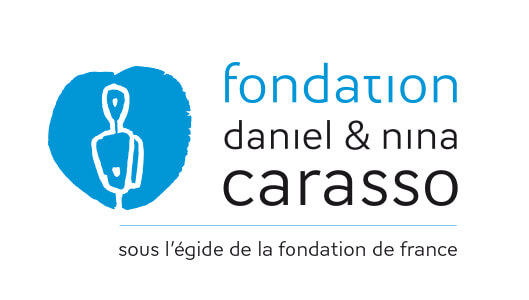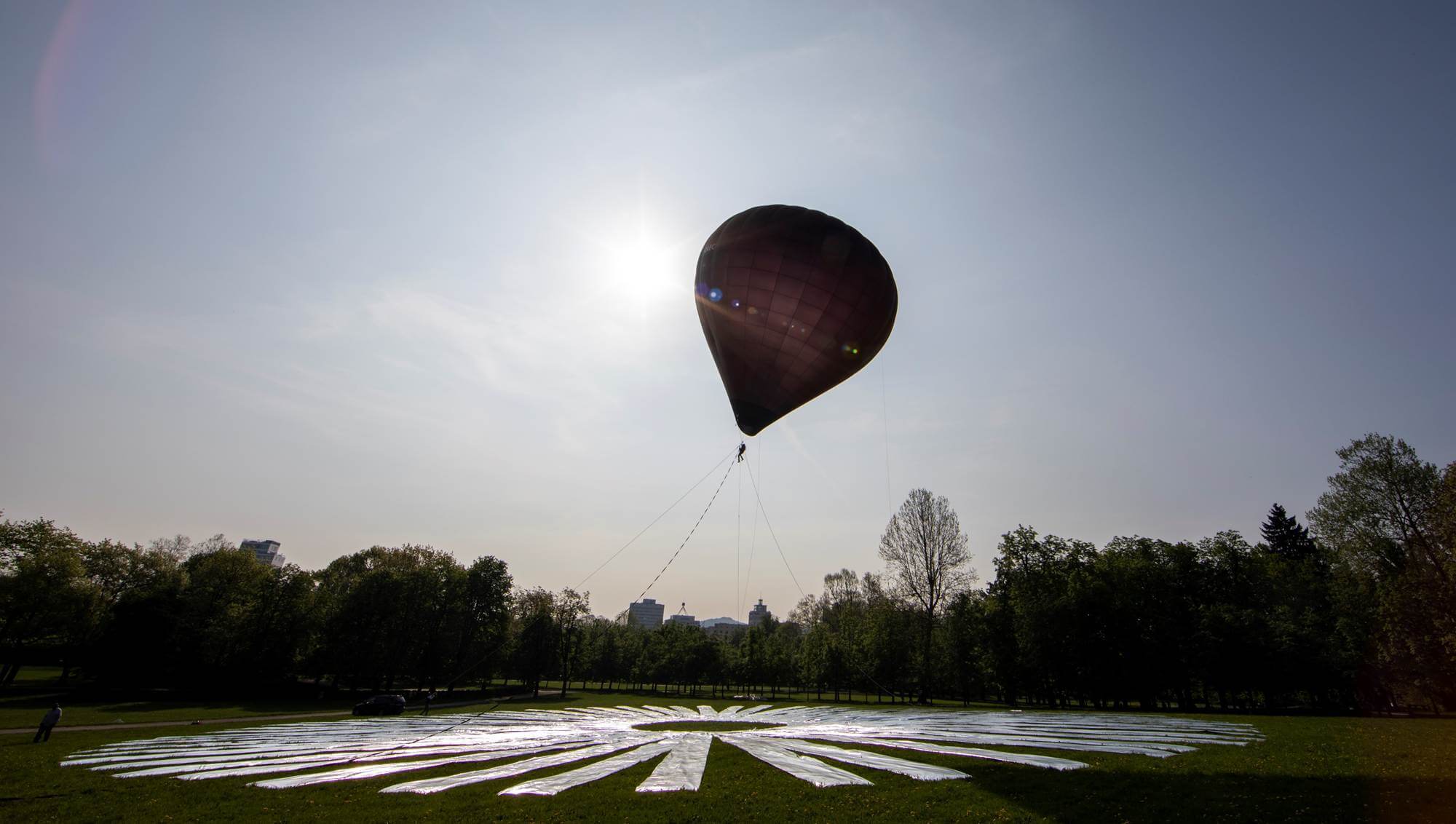Aerocene is an open-source activist endeavor that envisions a new epoch of Earth’s planetary history, an epoch in which environmental awareness, ethics and politics are critical social values. In the unfolding of this history, Aerocene proposes forms of moving and sensing that embrace solar energy, wind currents and infrared radiation. Thus Aerocene Explorer sculptures float without burning fossil fuels, without using solar panels and batteries, and without helium, hydrogen and rare gases. In this way, Aerocene sculptures follow the energetic and elemental gestures of our planet and its nearest Star, enabling citizen-led environmental research and novel patterns of aerial mobility.
TALKS / 3pm – 7pm
The conversations are in english.
Introduced by Rebecca Lamarche-Vadel and Tomás Saraceno.
Curated and moderated by Sasha Engelmann.
Keynote by Aerocene Community.
With: Primavera de Filippi, Stavros Katsanevas, Derek McCormack, Nick Shapiro, Débora Swistun, Marie Thébaud-Sorger, Sam Hertz, Karine Léger and Jol Thomson, Heinz Wismann .
Gathering together Aerocene practitioners, contributors and fellows with expertise in environmental justice, participatory decision-making, elemental philosophy and the histories and matters of air, the Aerocene Symposium animate and intensify the ongoing conversations, experiments and questions of the Aerocene epoch. The public of Paris is invited to join the Aerocene community in these discussions as well as a possible free flight (weather permitting) and the initiation of hands-on workshops. To reflect Aerocene’s ecologies of practice, the symposium favor generous dialogical formats that privilege audience involvement and feature encounters with the materials and imaginaries of the Aerocene.
WORKSHOP /
Museo Aero Solar: The Museo Aero Solar workshop proposes to build a balloon by taping found plastic bags. Museo Aerosolar, both a flying museum and a solar sculpture, is a collective project initiated by Tomás Saraceno in 2007. It is an open invitation for everyone to turn used plastic bags into a lighter-than-air balloon.
JAMMING WITH SPIDERS / from 9pm
“Moon bounce concert” by Alvin Lucier.
Alvin Lucier, historical figure of experimental music from the 1960’s until today imagines an unreleased work for ON AIR during which his heartbeat is picked up by a special sensor, routed through the silk strings of a Qin, ancient Chinese stringed instrument, and sent to the moon. In about two-and-a-half seconds each heartbeat will bounce back to Earth. The sound of the heartbeats will change according to reflection points from the Moon’s surface.
With the support of the Festival d’Automne à Paris.
These conversation sessions are made possible thanks to the support of

Participant Biographies
Sasha Engelmann is Lecturer in GeoHumanities in the department of Geography at Royal Holloway University of London, where she also directs the GeoHumanities Creative Commissions program. She collaborates with artists and creative practitioners to explore questions of environmental sensing and politics. Since completing her doctoral research as a creative ethnographer in collaboration with Studio Tomás Saraceno, she has become an active member of the Aerocene community. She is preparing a book manuscript provisionally titled Elemental Lures, and is curating and moderating the Aerocene Symposium at the Palais de Tokyo.
Primavera De Filippi is a Permanent Researcher at the National Center of Scientific Research (CNRS) in Paris, a Faculty Associate at the Berkman-Klein Center for Internet & Society at Harvard University, and a Visiting Fellow at the Robert Schuman Centre for Advanced Studies at the European University Institute. She is a member of the Global Future Council on Blockchain Technologies at the World Economic Forum, and co-founder of the Internet Governance Forum’s dynamic coalitions on Blockchain Technology (COALA). Her fields of interest focus on legal challenges raised by decentralized technologies, their potential to design new governance models and participatory decision-making, and the concept of governance-by-design. Her book Blockchain and the Law was published in 2018 by Harvard University Press (co-authored with Aaron Wright).
Stavros Katsanevas is Professor at the Université Denis Diderot (UDP) and since January 2018 director of the European Gravitational Observatory (EGO/Virgo) in Pisa. He has also served as deputy director of the National Institute of Nuclear and Particle Physics (IN2P3) of CNRS, director of the AstroParticle and Cosmology (APC) laboratory of UDP/IN2P3/CEA/OdP, chairman of the AstroParticle Physics European Consortium (APPEC) of European funding research agencies and chairman of the councils of EGO/Virgo and the Auger Observatory of Cosmic Rays in Argentina, He is furthermore, Principal Investigator of the Institute for the Physics and Mathematics of the Universe (IPMU) of Tokyo. In 2000, he received the Physics Prize for his work on supersymmetry from the Academy of Athens. In 2011, he was awarded the Ordre National du Merite.
Derek McCormack is Professor of Cultural Geography in the School of Geography and Environment at the University of Oxford. He has long standing research interests in the relation between bodies, affect, and spaces. In more work he has examined the relations between atmospheres and the elemental, with a particular focus on the balloon as an experimental device. He is the author of Refrains for Moving Bodies: Experience and Experiment in Affective Spaces (2013) and Atmospheric Things: On the Allure of Elemental Envelopment (2018), both published by Duke University.
Nicholas Shapiro is a fellow at the University of Toronto’s Technoscience Research Unit and at Public Lab. His research leverages interdisciplinary collaborations to interrogate the limits and possibilities of environmental change. He initiated and co-founded the Environmental Data and Governance Initiative (EDGI) and will join the faculty of UCLA’s Institute of Society and Genetics in 2019.
Débora Swistun is an Argentine anthropologist. She has specialized in the right to the city and environmental justice, technological risks and co-production of public policies in Europe, North Africa, East Asia and Latin America. Her book Flammable: Environmental suffering in an Argentine Shantytown (2009) reveals and analyzes the life experience of her hometown next to the petrochemical compound of Dock Sud (Buenos Aires) and has received four international awards. Interested in the potential of scientific complementarity with other forms of knowledge to address problems of the Anthropocene she teaches Environmental Humanities (UNDAV/UNSAM) and participates in community, private and governmental level initiatives on issues of human displacement, disaster prevention and low impact living.
Marie Thébaud Sorger is a Permanent Researcher at the National Center for Scientific Research (CNRS) based at the Maison Française d’Oxford. After completing a doctoral degree on the reception of lighter-than-air machines in French and European societies, she published L’Aérostation au temps des Lumières (PUR, 2009). In Une Histoire des ballons: Invention, culture matérielle et imaginaire, 1783-1909 (Du Patrimoine, 2010) she explored the culture of flight over a long historical period. She also co-edited (with Nathalie Roseau) De l’invention à la massification: histoire d’une culture modern (MétisPresses, 2013). Her current research deals with technical improvements, inventive practices and the public sphere in Eighteenth century Europe; she has been focusing especially on the political, social and scientific management of gases, heat and ‘noxious / foul air’.
Jol Thomson is an artist, writer, and sound designer. Both his written and audio-visual work challenge the limits and boundaries of spacetimematter(s). He collaborates very closely with some of the worlds leading neutrino and dark matter observatories. ‘Exotic’ physics, posthumanism, and general ecology – or the environmental and philosophical implications of ‘landscape-laboratories’ in the age of the Anthropocene – are the focus of his practice-led PhD at the University of Westminster, London. Recent exhibitions include Blind Faith: Between the Cognitive and the Visceral in Contemporary Art, Haus Der Kunst, Munich and Open Codes: Living in Digital Worlds at ZKM, Karlsruhe. In 2017 Jol was a fellow of Akademie Schloss Solitude, Stuttgart and resident artist in the Bosch corporations Campus for Research and Advanced Engineering. In 2016 he won the MERU Art*Science Award for his work G24|0vßß. www.jol-t.com
Heinz Wismann was born in 1935 in Berlin. A philosopher and philologist specialising in hermeneutics and the history of scholarly traditions, he taught philosophy at the Sorbonne from 1962 until his appointment at the EHESS in 1978, where he has been running a teaching and research programme on the epistemology of human science. Between 1991 and 2000, he also chaired the Protestant Institute for Interdisciplinary Research in Heidelberg (FEST). He founded the Passages collection of the Editions du Cerf publishing house in 1986 and was its editor until 2007. He is a member of the Académie d’Agriculture de France and has served on the scientific councils of the Maison des Sciences de l’Homme in Sofia and the Institut des Hautes Etudes pour la Science et la Technologie in Paris.
Samuel Hertz is a Berlin-based composer, researcher, and sound artist working at the intersection of Earth-based sound, sonic sensualities, and climate change. Often crossing genres, his previous work has taken the form of through-composed music, multi-media electronics performances, large-scale speaker installations, IMAX and standalone films, performative installations, and more. As the 2017-18 recipient of the DARE Prize for Radical Interdisciplinarity, his recent performances and research concerns affective congruencies between humans sense perception, sound below the level of human hearing, a geologic timescales. His solo work has recently been seen in venues such as the Macerata Opera Festival (IT), National Science + Media Museum (UK), The Tetley (UK), and Opera North (UK), and his collaborations with contemporary performance companies has been seen at ImPulsTanz (AT), Charleroi Danses/La Raffinerie (BE), Sophiensaele (DE), and ICI/CCN (FR) among many others.
Alvin Lucier (born May 14, 1931) is an American composer of experimental music and sound installations that explore acoustic phenomena and auditory perception. A long-time music professor at Wesleyan University, Lucier was a member of the influential Sonic Arts Union, which included Robert Ashley, David Behrman, and Gordon Mumma. Much of his work is influenced by science and explores the physical properties of sound itself: resonance of spaces, phase interference between closely tuned pitches, and the transmission of sound through physical media. Alvin Lucier has pioneered many areas of music composition and performance, including the notation of performers’ physical gestures, the use of brain waves in live performance, the generation of visual imagery by sound in vibrating media and the evocation of room acoustics for musical purposes. His recent works include a series of sound installations and works for solo instruments, chamber ensembles and orchestra in which, by means of close tunings with pure tones, sound waves are caused to spin through space.
Karine Léger is managing director at Airparif. Airparif is an independent organization that has been monitoring air pollution for 40 years, informing stakeholders and assisting authorities when designing air quality action plans. Karine has both a technical and a management background, linked with environmental issues (Executive master in management, Advanced Msc. in environmental management and engineering, Eng. in agriculture, BSc in Biology). She has been involved in air pollution issues for 18 years as she started to work at Airparif in 2001, at various position: study engineer, head of the communication and international department and head of the communication and digital department. She is also part of the forecaster team in charge of the daily bulletin and of pollution episode management. She develops and contributes to the management and development of different international projects and MoU, mainly with Airparif’s counterparts abroad: in Beijing, Tehran, Hanoi, Buenos Aires… dealing with the same challenge of improving the air quality their citizens breathe.


